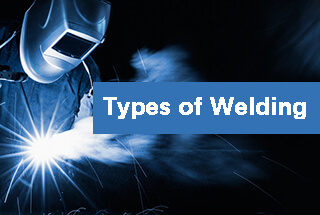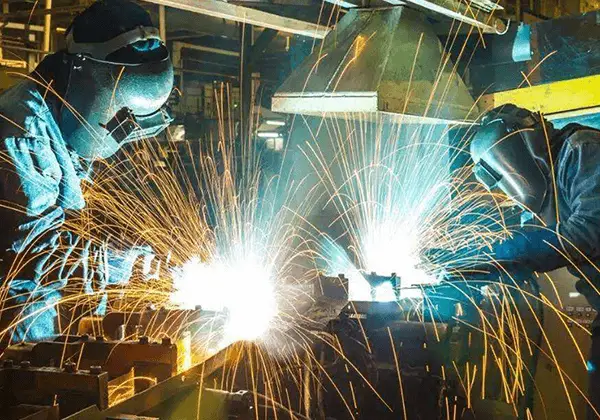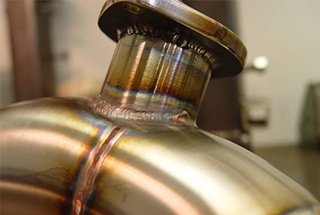Aluminum alloy welding is very different from the welding of general carbon steel, stainless steel and other materials.
It is easy to produce many defects that other materials do not have, which need to be avoided by targeted measures.
Let’s take a look at the problems prone to occur in aluminum alloy welding and the requirements for the welding process.

Welding difficulties of aluminum alloy materials
The thermal conductivity of aluminum alloy is 1 to 3 times higher than that of steel, and it is easy to heat up.
However, this material is not resistant to high temperature and has a large temperature rise expansion coefficient, which is easy to cause welding deformation.
Moreover, this material is easy to crack and weld through during welding, especially the welding of thin aluminum plate is more difficult.
Aluminum alloy welding will produce a certain amount of hydrogen in the molten pool.
If these gases are not discharged before weld forming, they will cause pores in the weld and affect the quality of weldments.
Aluminum is a metal that is easily oxidized. There is almost no unoxidized aluminum in the air.
When the surface of aluminum alloy is directly exposed to air, a layer of dense and insoluble aluminum oxide film will be formed on the surface.
The oxide film and its wear-resistant and high-temperature resistance have a melting point of more than 2000 ℃.
Once formed, the subsequent processing difficulty will be greatly increased.
There are also some problems in aluminum alloy welding, such as easy softening of joints, low surface tension in melting state, easy to produce defects and so on.
Requirements for welding process of aluminum alloy
Firstly, from the perspective of welding equipment, if MIG / MAG welding machine is used, it must have pulse function such as single pulse or double pulse.
The best is the double pulse function.
Double pulse is the superposition of high-frequency pulse and low-frequency pulse. Low-frequency pulse is used to modulate high-frequency pulse.
In this way, the double pulse current is fixed and periodically switched between the peak current and the base current at the frequency of low-frequency pulse, so that the weld can form regular fish scale lines.
If you want to change the forming effect of weld, you can adjust the frequency and peak value of low-frequency pulse.
Adjusting the low-frequency pulse frequency will affect the switching speed between the peak value and base value of the double pulse current, which will change the spacing of fish scale lines in the weld.
The greater the switching speed, the smaller the spacing of fish scale pattern.
Adjusting the peak value of low-frequency pulse can change the stirring effect on the molten pool, so as to change the welding depth.
Choosing the appropriate peak value has obvious effects on reducing the generation of pores, reducing heat input, preventing expansion deformation and improving weld strength.
In addition, from the perspective of the welding process, the following matters should be paid attention to:
First, clean the surface of aluminum alloy before welding, and all dust and oil stains must be removed.
Acetone can be used to clean the surface of aluminum alloy welding joint. For thick aluminum alloy plate, first clean it with steel wire brush, and then clean it with acetone.
Second, the welding wire material used should be as close to the base metal as possible. Whether to choose aluminum silicon welding wire or aluminum magnesium welding wire should be determined according to the weld requirements.
In addition, aluminum magnesium welding wire can only be used to weld aluminum magnesium materials, while aluminum silicon welding wire can be used for welding aluminum silicon materials and aluminum magnesium materials.
Third, when the thickness of the plate is large, the plate shall be preheated in advance, otherwise it is prone to incomplete welding, and the pit shall be filled with small current during arc closing.
Fourth, when tungsten argon arc welding is carried out, DC argon arc welding machine shall be used, and forward and reverse AC and DC shall be used alternately.
Forward DC is used to clean the oxidation mold on the aluminum surface, and reverse DC is used for welding.
In addition, it should be noted that the welding specifications are set according to the plate thickness and weld requirements;
Special aluminum wire feeding wheel and Teflon wire guide tube shall be used for MIG welding, otherwise aluminum chips will be generated;
The length of the welding gun cable should not be too long.
The aluminum welding wire is soft. Too long the welding gun cable will affect the stability of wire feeding.


